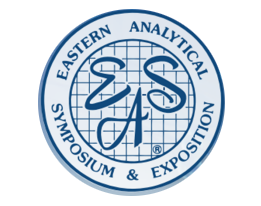Infrared Microspectroscopy and Chemical Mapping at the Nanoscale
Using AFM-IR Spectroscopy and Imaging,
produced with New York Microscopical Society and New York Conservation Foundation
E14-24, One-Day Course, Wednesday, November 19, 8:30am-5:00pm
Dr. Alexandre Dazzi, Université Paris-Sud, Orsay, France
Dr. Curtis Marcott, Light Light Solutions, Seabrook Island, SC
COURSE DESCRIPTION
Infrared microspectroscopy is the one of the most powerful techniques available for enabling chemical identification and localization of particular compounds. The number of applications in different domains of science, such as chemistry, biology, agronomy, and medicine underline the usefulness of infrared analysis. However, this technique is limited by diffraction, as it is the case for classical optical microscopy, making the maximum obtainable spatial resolution in the IR-range from 4000 cm-1 to 500 cm-1, around 2-µm to 20-µm.
In this course we introduce a new way to make microspectroscopic measurements at the nanometer scale, via the AFM-IR technique. We will explain the principle of the technique and provide numerous applications in the biological domain and in polymer science.
WHO SHOULD ATTEND
This one-day course will benefit infrared spectroscopists, analytical chemists, and materials researchers who perform infrared analysis, whatever the sample type.
TOPICS
1. Infrared Spectroscopy Basics
* Beer-Lambert law for optics
* Relationship between refractive index and molecular vibration
* Infrared spectrometers
2. Infrared Microspectroscopy; a Powerful Tool
* Wide field microscope
* Confocal microscope
3. Resolution Concept in Classical Optics
4. Infrared Near-Field Techniques
5. AFM-IR; a New Tool for Nanoscale IR Spectroscopy
* Setup description
* Full analytical description
6. Applications in Microbiology and Cellular Biology
7.Applications in Polymer Science
ABOUT THE INSTRUCTORS
Dr. Alexandre Dazzi has a research program focused on nanoscale IR Spectroscopy, a technique that he invented. Specific research objectives including applying the technique to solve interesting problems in microbiological and cellular imaging, while simultaneously pushing the limits of the technique itself. He obtained his Ph.D. in Physics in 1998 at the Université de Dijon, and did post-doctoral work at the Centre de Recherche Paul Pascal at Bordeaux. This training gave him a solid background in near field optics techniques. In 2000 Dr. Dazzi took an associate professor position at the CLIO FEL facility, where he worked on near-field techniques in the infrared region. After initially focusing on infrared Scanning Near-field Optical Microscopy (SNOM), Dr. Dazzi invented a technique called Photothermal Induced Resonance (PTIR) that enables an AFM probe to act as a detector that can provide information on infrared spectroscopy at the nanoscale. This patented technique has been commercialized by Anasys Instruments in its nanoIR product. Dr. Dazzi received his habilitation in October 2008 and was the 2009 laureate for France’s national instrumentation prize from the Societé Francaise Division de Chimie Physique. He was also associated with R&D 100 awards in 2010 and the Microscopy Today 2011 Innovation Award for the nanoIRTM. He also teaches nanoscience at the Université Paris-Sud.
Dr. Curtis Marcott is currently a Senior Partner at Light Light Solutions, LLC, a spectroscopic consulting firm. A former research fellow at Procter & Gamble, Curt was the 2011 President of the Society of Applied Spectroscopy and is a member of the Editorial Advisory Board of Applied Spectroscopy. He is a past member of the editorial advisory boards of Analytical Chemistry and Vibrational Spectroscopy, the A-page advisory panel of Analytical Chemistry, and the board of managers of the Coblentz Society. He served as program committee chairman for the 2009 FACSS Conference and the Sixth International Conference on Advanced Vibrational Spectroscopy (ICAVS-6). Dr. Marcott received the 1993 Williams-Wright Award from the Coblentz Society for achievement in vibrational spectroscopy, and was named the 2001 Cincinnati Chemist of the Year. Dr. Marcott is currently an Adjunct Professor of Materials Science and Engineering at the University of Delaware and an Adjunct Professor in the Department of Chemistry and Biochemistry at Miami University in Oxford, OH. Curt obtained his PhD in Chemistry from the University of Minnesota in 1979.

